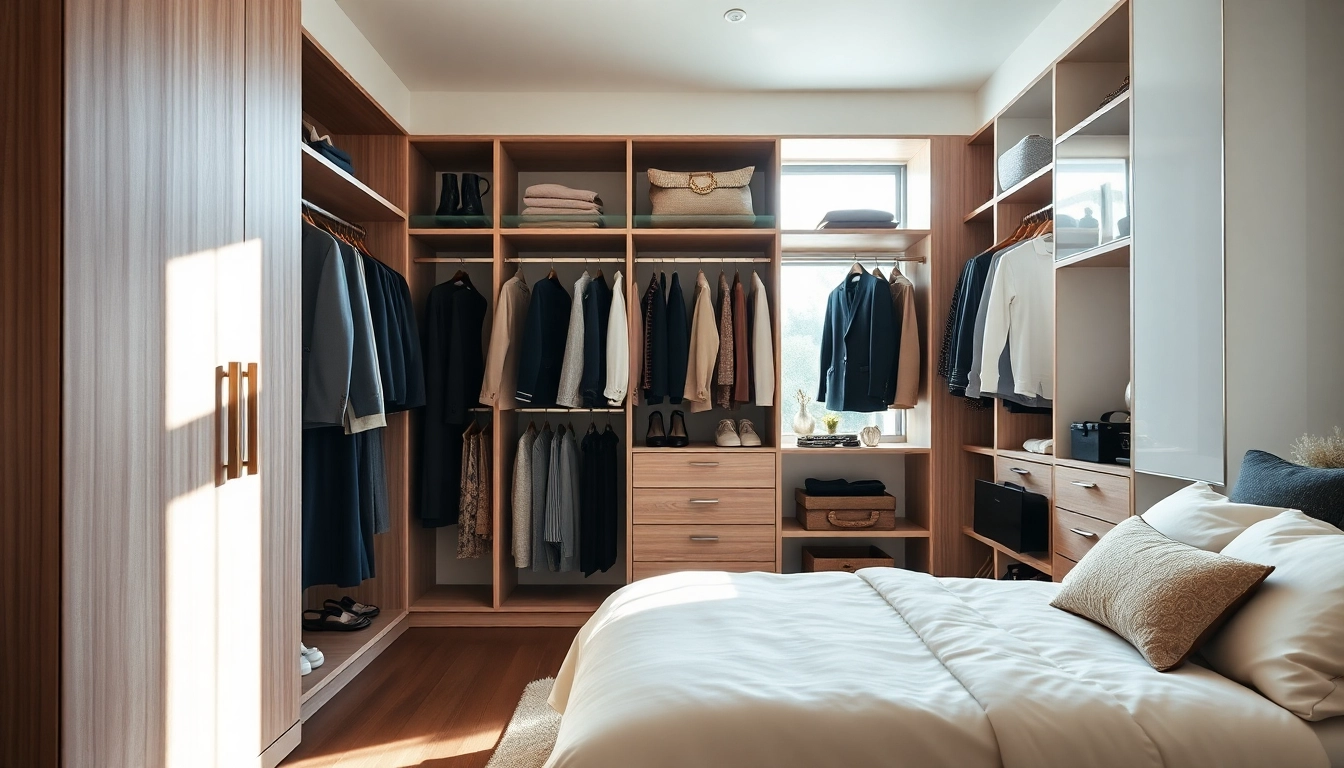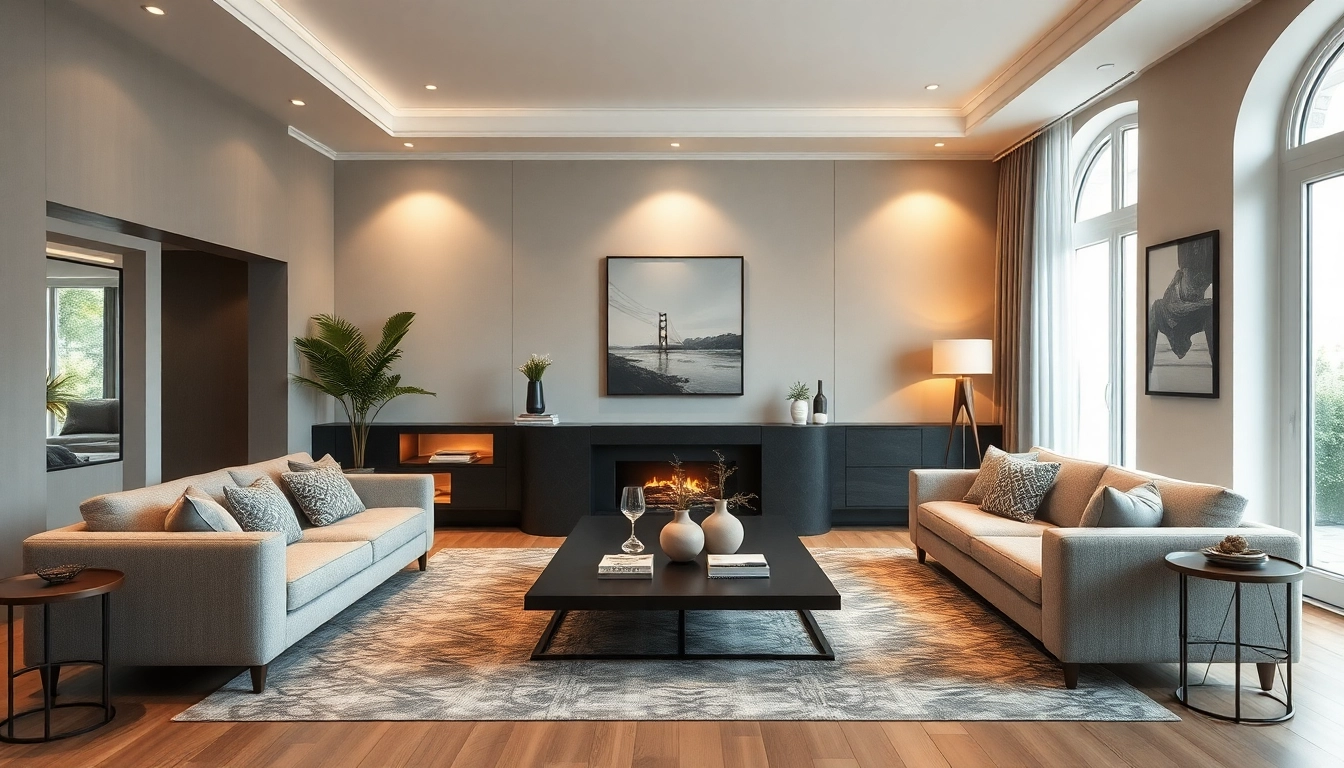Understanding the Concept of Smart Closet
The emergence of the smart closet has revolutionized how individuals manage their wardrobes, transforming a simple storage space into a sophisticated system that streamlines dressing routines and enhances personal style. This modern innovation combines fashion with technology to create an adaptable space tailored to each user’s needs, preferences, and lifestyle. In this section, we will explore the essence of a smart closet, its numerous benefits, and common features that make it unique.
What is a Smart Closet?
A smart closet is essentially an advanced wardrobe management system that employs a fusion of technology and design to optimize how you store and access your clothes and accessories. Unlike traditional closets, smart closets utilize various organizational methods, often integrated with digital applications, to provide users with a seamless clothing experience. Features may include automated shelving, integrated lighting systems, and smart technologies that allow for virtual outfit planning and inventory management.
Benefits of Implementing a Smart Closet
Integrating a smart closet into your living space offers a range of advantages:
- Enhanced Organization: Smart closets help maintain a clutter-free environment by categorizing clothing, making it easier to find specific items.
- Time-Saving: With quick access to your wardrobe and an ability to plan outfits digitally, smart closets reduce the time spent deciding what to wear.
- Increased Visibility: Smart closet systems often include lighting solutions that illuminate the space, making it easier to see all clothing and accessories at a glance.
- Personalized Experience: Many smart closets are designed to adapt to individual preferences and lifestyles, offering tailored solutions that cater to your specific needs.
- Budget Management: By tracking what you own, you can avoid impulse buys and better manage your clothing budget.
Common Features of Smart Closets
Smart closets come equipped with various features designed to enhance utility and user experience:
- Inventory Management: Tracking clothing items, their condition, and the frequency of wear helps users make informed decisions about purchases and donations.
- Virtual Outfit Planning: Many systems allow users to create and save outfit combinations digitally, which can be particularly useful when planning for travel or special events.
- Climate Control: Some smart closets integrate technology that helps regulate temperature and humidity to protect delicate fabrics.
- Automated Solutions: Automated racks and rotating hangers allow clothing to be easily accessible and neatly arranged without hassle.
Planning Your Smart Closet Design
Designing a smart closet involves thoughtful planning to ensure that the space not only meets storage needs but also provides a conducive environment for organization and efficiency. Here, we outline essential steps in planning, techniques for optimization, and common pitfalls to avoid.
Essential Steps for Planning
To create an efficient smart closet, consider the following steps:
- Assess Your Space: Evaluate the available area for your smart closet, measuring the dimensions to determine how to best utilize the space.
- Identify Your Needs: Consider your wardrobe inventory, lifestyle demands, and any specific features you want your closet to include.
- Design Layout: Create a layout that facilitates ease of use and accessibility, allowing for a well-organized system that promotes efficiency.
- Seek Professional Consultation: While many can undertake DIY projects, consulting a professional designer can provide insights you may overlook.
Space Optimization Techniques
Maximizing your closet space is essential for creating an effective smart closet. Here are some techniques to implement:
- Vertical Storage: Utilize vertical space with tall shelving units to maximize storage capacity.
- Multifunctional Furniture: Consider furniture pieces that serve dual purposes, such as benches that store items underneath.
- Modular Closets: Opt for modular systems that can be easily reconfigured as your wardrobe changes.
Common Mistakes to Avoid
When planning your smart closet, it’s crucial to avoid common mistakes that could hinder functionality:
- Overcrowding: Avoid cramming too many items into one space; instead, maintain a manageable volume to make organization easier.
- Neglecting Lighting: Poor lighting can make it difficult to see items; incorporate adequate lighting solutions to enhance visibility.
- Lack of Flexibility: Failing to plan for future wardrobe additions can lead to a system that quickly becomes outdated; ensure your design accommodates growth.
Choosing Materials and Styles for Your Smart Closet
The materials and styles you choose for your smart closet can significantly affect its durability, aesthetic appeal, and functionality. This section highlights the best materials, popular styles, and budgeting tips to consider.
Best Material Options
When selecting materials for your smart closet, consider these reliable options:
- Engineered Wood: This is durable, cost-effective, and can be designed to resemble more expensive options like solid oak.
- Metal: Ideal for modular shelving and hanging systems, metal offers exceptional strength and stability.
- Glass: This can enhance aesthetics, particularly in doors or shelving, but should be balanced with practicality to avoid maintenance issues.
Popular Styles and Trends
The appearance of your smart closet speaks volumes about your personal style. Current trends to consider include:
- Minimalist Designs: Clean lines and uncluttered spaces dominate contemporary closets, creating a sense of calm.
- Bold Colors: Experimenting with paint or wallpaper can inject personality and flair into your closet.
- Eco-Friendly Solutions: Sustainability is at the forefront for many consumers, leading to the popularity of materials sourced from renewable sources.
Budgeting for Your Smart Closet
Budget considerations are crucial when planning a smart closet. Here are some tips to keep your project financially feasible:
- Define Your Budget: Set a realistic budget that encompasses all essentials, including materials, labor, and design services.
- Prioritize Features: Determine which features are must-haves versus those that are nice-to-have; this will guide decisions on spending.
- Seek Discounts: Many retailers offer sales and discounts on materials, so stay vigilant about pricing.
Technology Integration in Smart Closets
Technological advancement has played a crucial role in transforming traditional closets into smart closets. This section examines storage solutions, app integration, and trends shaping the future of closet technology.
Smart Storage Solutions
Smart storage solutions enhance organization and accessibility. Explore these innovative options:
- Automated Shelving: Consider smart shelves that can adjust height or access based on the items stored.
- Bluetooth Trackers: These can be attached to clothing or accessories, ensuring nothing goes missing.
- Integrated Charging Stations: Incorporating charging solutions into closet designs allows for easy management of tech items alongside apparel.
Using Apps for Closet Management
Several mobile applications are designed to enhance user experience with smart closets:
- Virtual Wardrobe Apps: These apps can feature outfit suggestions, and track what you wear and what you own.
- Fashion Organization Apps: Enable users to categorize their items and showcase their style visually, often through the use of photo libraries.
- Inventory Management Tools: Features that let you know the quantity and condition of items and help you make decisions on when to buy new clothing.
Future Trends in Smart Closet Technology
As technology continues to evolve, so too will the smart closet. Here are trends on the horizon:
- Artificial Intelligence: AI-driven recommendations for outfits based on occasions, weather, and personal style preferences.
- Augmented Reality: Utilizing AR to visualize how clothing fits or appears without trying it on physically could change how we shop for apparel.
- Advanced Sustainability: Emerging technologies focused on eco-friendlier materials and practices will likely become a hallmark of future smart closets.
Maintaining and Organizing Your Smart Closet
Once your smart closet is set up, maintaining order and organization is key to its long-term effectiveness. This section offers routine maintenance tips, organizational methods, and advice for seasonal adjustments.
Routine Maintenance Tips
To keep your smart closet functioning optimally, consider these maintenance practices:
- Regular Cleanouts: Schedule regular times to go through your closet, removing items that are no longer worn or needed.
- Maintain Inventory: Keep your app or inventory management updated to reflect recent changes in your wardrobe.
- Inspect for Wear: Regularly check your items for signs of wear and tear, addressing repairs or replacements straight away.
How to Keep Your Smart Closet Organized
To maintain a seamless organization system, implement the following:
- Consistent Categorization: Keep a consistent method for organizing clothing—by type, color, or season—to easily navigate.
- Use Labels: Label shelves or boxes to enhance visibility and organization, making everything easy to locate.
- Rotate Seasonal Items: Store out-of-season clothing separately and swap them out as seasons change to keep the closet fresh and manageable.
Seasonal Adjustments and Upgrades
As the seasons change, so should your closet. Here’s how to adapt effectively:
- Assess Seasonal Trends: Before each season, take stock of fashion trends and evaluate what clothes to add or remove based on current styles.
- Adjust for Climate: Ensure that your closet environment supports seasonal clothing needs, considering temperature and humidity control.
- Upgrade Technology: Regularly assess whether your current closet technology meets your needs, opting for updates as innovations arise.



